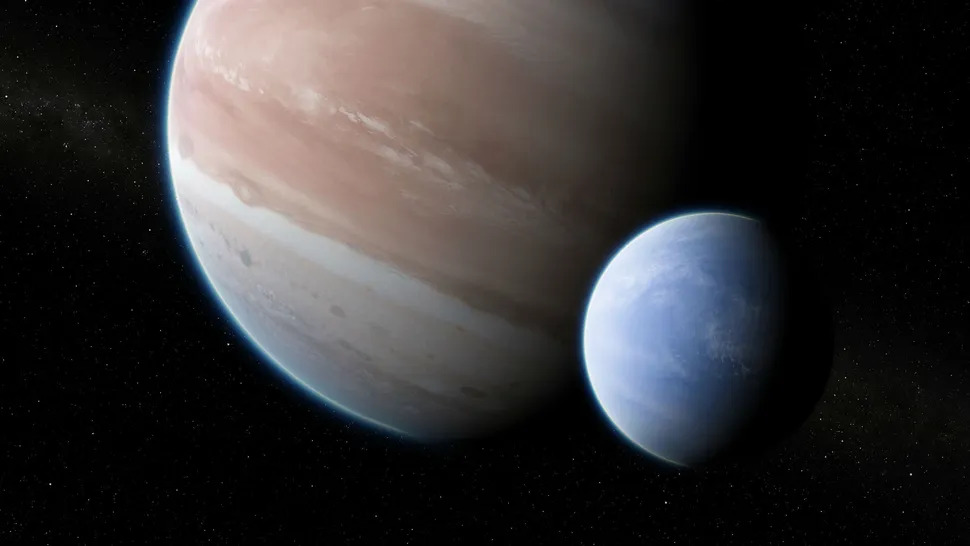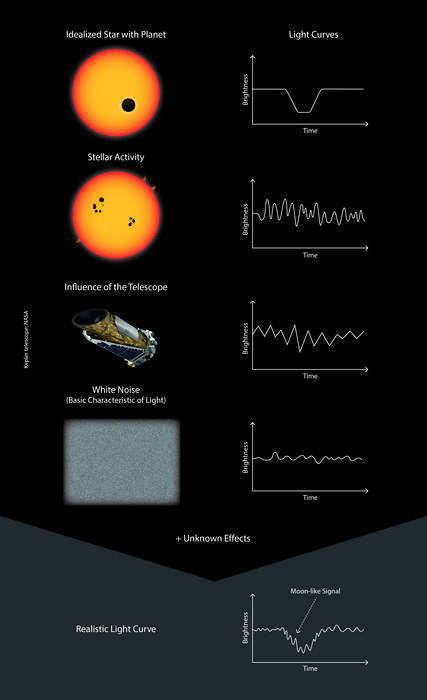That’s no moon! Scientists doubt proposed detection of the 1st exomoons
While the exoplanet catalog burgeons to over 5,000 known worlds, exomoon discovery is a whole other story.

New research has a duo of scientists channeling Obi-Wan Kenobi from Star Wars: A New Hope regarding the proposed detection of two moons orbiting planets outside the solar system. In short, they're not sure humanity's first-ever exomoon detections are accurate. In fact, the same findings also showed that exomoons in general may only show themselves if they are extremely large.
The research demonstrates that, while there is no reason to suggest moons aren't orbiting worlds in other planetary systems, finding them is a tricky business. In the three decades since the first detection of an extrasolar planet or "exoplanet," the catalog of worlds around other stars has burgeoned with well over 5,000 examples confirmed to date. Yet, any possible extrasolar moons or "exomoons" orbiting these worlds have evaded astronomers.
That was until 2018, when astronomers believed they had finally spotted an exomoon around the planet Kepler-1625 b, a Jupiter-like world located around 8,000 light years from Earth. Then, in Jan. 2022, astronomers believed they had spotted a second exomoon, this time orbiting the exoplanet Kepler-1708 b, a gas giant 4.6 times the mass of Jupiter located 5,400 light-years from Earth. Kepler-1708 b itself was only discovered in 2021.
But still, this meant of the 5,000 known exoplanets or so, just two had been found with moons. This wasn't too much of a concern for astronomers, however, because they reasoned the worlds themselves are incredibly distant, and the exomoons must be much smaller than the exoplanets. So, they should be much tougher to find, right? Yet now, even those detections are in doubt.
Related: This ‘forbidden’ exoplanet is way too massive for its star
"Exomoons are so far away that we cannot see them directly, even with the most powerful modern telescopes," René Heller, team leader and a scientist at the Max Planck Institute for Solar System Research (MPS), said in a statement. "We would have liked to confirm the discovery of exomoons around Kepler-1625 b and Kepler-1708 b, but unfortunately, our analyses show otherwise."
Pandora's box reveals grim 'planet only' predictions
Exoplanets are often spotted orbiting their host stars when they cross in front of, or "transit" that star, causing a tiny dip in the star's light output. The method should work on exomoons too, but because these satellites are much smaller than the worlds they orbit, a possible dip in light they cause would be farless significant.
Breaking space news, the latest updates on rocket launches, skywatching events and more!
Additionally, an exomoon would need to be at a precise point in its orbit while scientists watch it transit, as its host planet transits the star too. Basically, that moon must be in a very specific position in relation to the planet so it can block some of its own starlight. This is actually one of the reasons that evidence of the Kepler-1625 b exomoon appeared and then disappeared in Kepler Space Telescope data — only to reappear in later Hubble Space Telescope observations.
Heller and colleagues arrived at the disappointing news regarding the exomoons of Kepler-1625 b and Kepler-1708 b using a computer algorithm they developed called "Pandora." Applying Pandora, designed to accelerate the discovery of exomoons, to data collected by NASA's Kepler Space Telescope of Kepler-1708 b revealed that scenarios lacking an exomoon were just as likely to explain observations of that exoplanet and its star alone.
"The probability of a moon orbiting Kepler-1708b is clearly lower than previously reported. The data do not suggest the existence of an exomoon around Kepler-1708b," Michael Hippke, research co-author and an astronomer at Sonneberg Observatory, said in the statement.
For Kepler-1625 b, Hippke and Heller suggest that an effect called "stellar limb darkening," which can cause variations in brightening across a star, impacted the proposed exomoon signal. Stellar limb darkening, they say, would actually better explain observations of the parent star than darkening caused by the presence of a potential alien moon.
Further, the team's research also presented bad news for exomoon hunters in general. When the duo used Pandora to predict the types of exomoons that could be detected from dips in light by Kepler and other space telescopes, they found that only particularly huge moons — around twice the size of Ganymede, the largest moon in our solar system — in wide orbits around their planet can be seen with current technology.
If other planetary systems are like the solar system, then this kind of extreme moon would be very odd indeed. We know of around 290 solar system moons, and none fit this bill — meaning exomoon detection could be even less likely than it already was.
This research was published on Dec. 7 in the journal Nature Astronomy.

Robert Lea is a science journalist in the U.K. whose articles have been published in Physics World, New Scientist, Astronomy Magazine, All About Space, Newsweek and ZME Science. He also writes about science communication for Elsevier and the European Journal of Physics. Rob holds a bachelor of science degree in physics and astronomy from the U.K.’s Open University. Follow him on Twitter @sciencef1rst.

